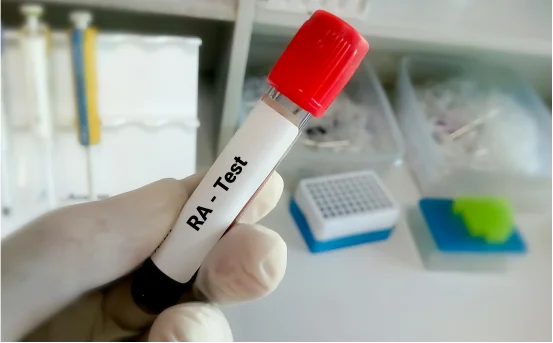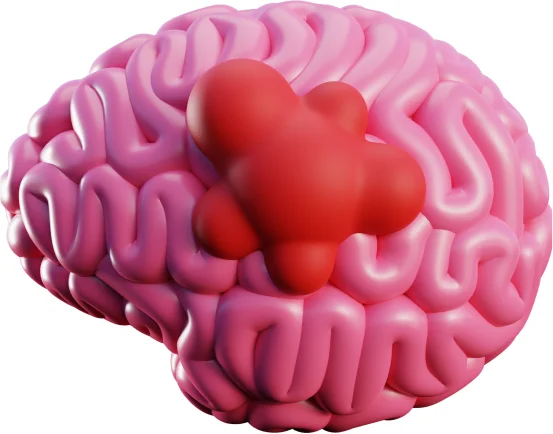Rheumatoid arthritis disease (RA) is a chronic autoimmune condition that causes inflammation in the joints, often leading to pain, stiffness, swelling, and potential joint deformities. Early diagnosis and timely intervention can significantly improve outcomes, prevent joint damage, and improve quality of life. Understanding how RA is diagnosed is crucial for patients and caregivers alike.
Early diagnosis of rheumatoid arthritis is critical to prevent irreversible joint damage and reduce the risk of long-term disability. The timely diagnosis of rheumatoid arthritis is essential for effective management. Fortunately, advancements in diagnostic testing including blood markers, imaging techniques, and refined clinical criteria have made it possible to identify RA much earlier than ever before. Yet, awareness among the general public remains limited, which often leads to delayed consultations and missed opportunities for early intervention in the diagnosis of rheumatoid arthritis.
What is Rheumatoid Arthritis?
Rheumatoid arthritis is an autoimmune disease where the body’s immune system mistakenly attacks healthy joint tissues. Unlike osteoarthritis, which is caused by wear and tear, RA involves inflammation of the synovial membrane the lining of joints causing painful swelling and joint damage over time. RA commonly affects joints on both sides of the body, such as wrists, knees, and fingers.
Understanding the diagnosis of rheumatoid arthritis is crucial for both patients and healthcare providers to ensure timely treatment and avoid complications.
RA can also affect other organs, including the eyes, lungs, heart, and skin, making early diagnosis vital for comprehensive care.
This underscores the significance of the diagnosis of rheumatoid arthritis in preventing further health complications.
Diagnosis of Rheumatoid Arthritis benefits
Diagnosing rheumatoid arthritis in its early stages offers several benefits :-
The importance of early diagnosis of rheumatoid arthritis cannot be overstated, as it paves the way for better treatment outcomes.
-
Prevention of joint damage :- The earlier the treatment, the better the chance of slowing joint destruction.
-
Improved quality of life :- Early treatment helps manage pain and restore function.
-
Disease remission :- Some patients can achieve long-term remission with prompt diagnosis and proper therapy.
The goal of any treatment is to promote the diagnosis of rheumatoid arthritis and achieve disease remission.
-
Reduced risk of complications :- Early intervention lowers the risk of systemic issues such as cardiovascular disease, lung disease, or fatigue.
Common Symptoms 0f Rheumatoid Arthritis
Recognizing the early signs of RA is the first step in diagnosis. Some of the common symptoms include :-
This recognition is vital for the accurate diagnosis of rheumatoid arthritis and can lead to timely intervention.
-
Persistent joint pain and stiffness (especially in the morning or after periods of inactivity)
-
Swelling in multiple joints
-
Fatigue and general malaise
-
Low-grade fever
-
Weight loss
-
Symmetrical joint pain (both knees, both wrists, etc.)
-
Decreased range of motion in joints
If you experience these symptoms for more than six weeks, it’s important to seek medical advice for further evaluation.
Seeking medical advice early can aid in the diagnosis of rheumatoid arthritis, leading to improved management strategies.
Who Should Get Tested for RA?
You should consider getting tested for rheumatoid arthritis if :-
-
You have persistent joint pain and swelling for over six weeks
-
Symptoms occur symmetrically (e.g., both hands or both knees)
-
You have a family history of autoimmune disorders
Such symptoms are often pivotal in establishing the diagnosis of rheumatoid arthritis.
-
Morning stiffness lasts longer than 30 minutes
-
You are experiencing unexplained fatigue or weight loss
RA is more common in women and typically begins between the ages of 30 and 60, though it can develop at any age.
Steps Involved in Diagnosis of Rheumatoid Arthritis
These steps are critical for the accurate diagnosis of rheumatoid arthritis to ensure that appropriate treatment is administered.
Diagnosing RA involves a combination of clinical examination, blood tests, imaging, and sometimes joint fluid analysis. There is no single test that can definitively confirm RA, so a combination of findings is used to make a diagnosis.
Medical History and Physical Examination
The focus on careful evaluation is essential in the diagnosis of rheumatoid arthritis.
Your doctor will begin by reviewing your medical history, family history of autoimmune diseases, and the symptoms you’re experiencing. A physical exam is performed to check :-
-
Swelling and tenderness in joints
-
Joint stiffness and mobility
-
Muscle strength and reflexes
-
Signs of systemic inflammation
Blood Tests for Rheumatoid Arthritis
Blood tests play a crucial role in the diagnosis of rheumatoid arthritis by identifying specific markers that indicate the presence of the disease.
Several blood tests help in detecting markers of inflammation and autoimmune activity.
- Rheumatoid Factor (RF) :- RF is an antibody found in about 70-80% of RA patients. However, it can also be present in other diseases, so it is not solely diagnostic.
- Anti-Cyclic Citrullinated Peptide (Anti-CCP) Antibodies :- Anti-CCP antibodies are more specific to RA and can often be detected early in the disease, even before symptoms become severe.
- Erythrocyte Sedimentation Rate (ESR) :- ESR measures the rate at which red blood cells settle at the bottom of a test tube. A higher rate indicates inflammation.
- C-Reactive Protein (CRP) :- CRP is another marker of inflammation. Elevated CRP levels suggest active inflammation in the body.
- Complete Blood Count (CBC) :- A CBC can help detect anemia, which is common in RA patients, and evaluate white blood cell counts that may indicate infection or inflammation.
Imaging Tests for Rheumatoid Arthritis
These imaging tests can substantially aid in confirming the diagnosis of rheumatoid arthritis, providing a clearer picture of joint health.
To assess joint damage and track disease progression, imaging tests are often used.
- X-Rays :- Used to detect joint erosion and narrowing of joint spaces. In early RA, X-rays may appear normal, but they help in tracking long-term progression.
- Ultrasound :- Ultrasound can detect early joint inflammation and synovial thickening that may not show up on X-rays.
- Magnetic Resonance Imaging (MRI) :- MRI provides detailed images of joints and soft tissues, helping detect subtle changes not visible through X-rays.
Joint Fluid Analysis
In some cases, a sample of joint fluid (synovial fluid) is taken using a needle to rule out other causes of joint swelling, such as gout or infections. The sample is analyzed for white blood cells, crystals, and bacteria.
Analyzing joint fluid is an important aspect of the diagnosis of rheumatoid arthritis, helping distinguish it from other conditions.
Classification Criteria for RA
To standardize diagnosis, the American College of Rheumatology (ACR) and European League Against Rheumatism (EULAR) developed a scoring system based on :-
-
Number and location of affected joints
-
Serological markers (RF and Anti-CCP)
-
Inflammation markers (ESR and CRP)
-
Symptom duration
A score of 6 or more out of 10 suggests definite RA.
Differential Diagnosis: Conditions That Mimic RA
Differential diagnosis is key to ensuring accurate diagnosis of rheumatoid arthritis, avoiding misdiagnosis with other similar conditions.
RA shares symptoms with several other diseases. Doctors may need to rule out :-
-
Lupus
-
Psoriatic arthritis
-
Osteoarthritis
-
Gout
-
Lyme disease
-
Fibromyalgia
Correct diagnosis ensures that the patient receives appropriate treatment.
Clarifying the diagnosis of rheumatoid arthritis helps in providing the correct treatment for optimal patient outcomes.
When to See a Rheumatologist?
If your primary care physician suspects RA, you may be referred to a rheumatologist, a specialist in autoimmune and joint disorders. Rheumatologists have the expertise to confirm the diagnosis and customize a treatment plan.
Conclusion
Diagnosing rheumatoid arthritis early is vital for effective management and long-term joint preservation. The process for the diagnosis of rheumatoid arthritis includes a combination of clinical evaluation, blood tests, and imaging to establish an accurate diagnosis.























